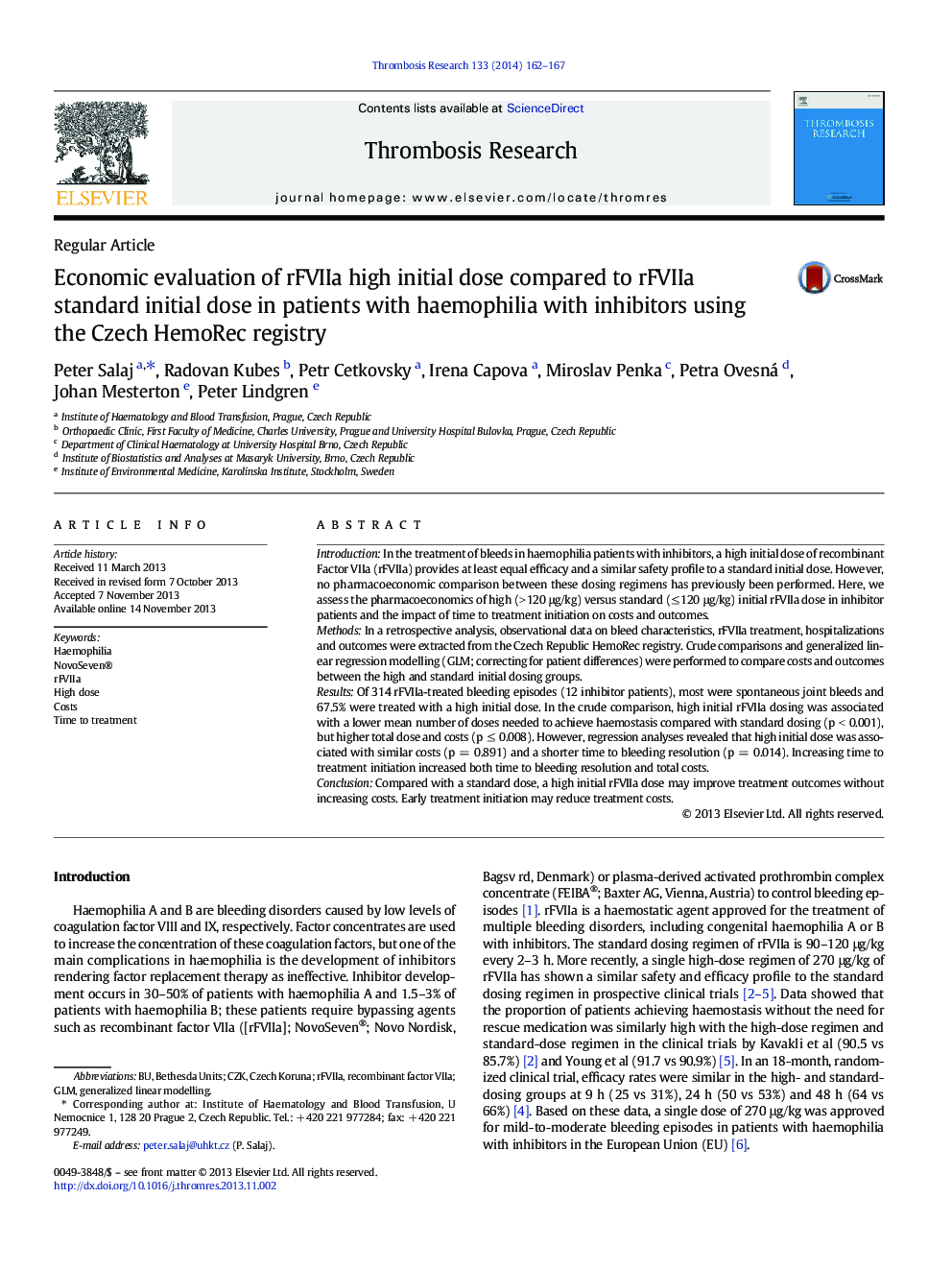| Article ID | Journal | Published Year | Pages | File Type |
|---|---|---|---|---|
| 6001483 | Thrombosis Research | 2014 | 6 Pages |
IntroductionIn the treatment of bleeds in haemophilia patients with inhibitors, a high initial dose of recombinant Factor VIIa (rFVIIa) provides at least equal efficacy and a similar safety profile to a standard initial dose. However, no pharmacoeconomic comparison between these dosing regimens has previously been performed. Here, we assess the pharmacoeconomics of high (> 120 μg/kg) versus standard (â¤Â 120 μg/kg) initial rFVIIa dose in inhibitor patients and the impact of time to treatment initiation on costs and outcomes.MethodsIn a retrospective analysis, observational data on bleed characteristics, rFVIIa treatment, hospitalizations and outcomes were extracted from the Czech Republic HemoRec registry. Crude comparisons and generalized linear regression modelling (GLM; correcting for patient differences) were performed to compare costs and outcomes between the high and standard initial dosing groups.ResultsOf 314 rFVIIa-treated bleeding episodes (12 inhibitor patients), most were spontaneous joint bleeds and 67.5% were treated with a high initial dose. In the crude comparison, high initial rFVIIa dosing was associated with a lower mean number of doses needed to achieve haemostasis compared with standard dosing (p < 0.001), but higher total dose and costs (p â¤Â 0.008). However, regression analyses revealed that high initial dose was associated with similar costs (p = 0.891) and a shorter time to bleeding resolution (p = 0.014). Increasing time to treatment initiation increased both time to bleeding resolution and total costs.ConclusionCompared with a standard dose, a high initial rFVIIa dose may improve treatment outcomes without increasing costs. Early treatment initiation may reduce treatment costs.
